|
Nutrition Tips for people with Arthritis Good nutrition can be helpful in:
 Omega 3 Oils There is limited evidence that fish oils (omega 3) reduce inflammation in some people with arthritis. Omega 3 oil is also thought to reduce risk of heart disease. It is recommended to have 1-2 servings of fish or other seafood a week for good health. Omega oil is also found in flaxseed oil, walnuts and a small amount in red meats. 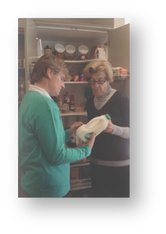 Vitamin Supplements If you are unable to achieve a healthy food intake, vitamin supplements may be necessary. Talk with your Doctor about this. Alternative Arthritis treatments Alternative treatments are available for many chronic diseases. Discuss these with your Doctor before you try them as they may interact with your treatment. Need more help? Therapy Professionals Ltd has experienced Dietitians who can provide group or individual nutrition education. For Enquiries: phone 377 5280.  Calcium
Ways to Maintain Healthy Weight To lose weight Even a small reduction in body weight will relieve stress on joints
Ways to gain weight For some people, keeping weight on can be a struggle
If you would like advice from our Dietitians, call us, we come to you
Therapy Professionals Ltd Phone No: (03) 377 5280 Email: [email protected] Website: www.therapyprofessionals.co.nz 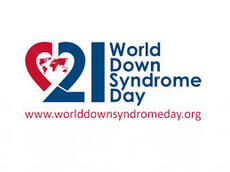 Ageing and Down Syndrome International Down Syndrome Day 21 March Adults with Down syndrome are living longer than ever before, now commonly reaching their 50’s 60’s and 70’s. For this reason it makes sense to learn all we can about the unexpected challenges that may accompany growing older. Many documents refer to adults with Down syndrome as ‘experiencing accelerated ageing'. What this means is, conditions usually seen in elderly adults (over 65) within the general population are being experienced by individuals with Down syndrome in their late 40's or 50's. The reason for this is not fully understood, but is believed to be largely related to the genes on chromosome 21 responsible for Down syndrome which are also associated with the ageing process. As we do not yet fully understand the ‘ageing’ process in adults with Down syndrome, predicting and preparing for this is challenging. Being aware of possible changes, and monitoring for early signs of these, will help with a proactive response. Below are a few common signs of ageing in adults with Down syndrome: Eyesight changes:
Diagnosis: Regular check ups with an Opthalmologist can help with early diagnosis. Hearing changes:
Diagnosis: Routine ear examinations for wax and periodic screening with an audiologist is recommended. Undiagnosed vision and hearing problems are common and are frequently mistaken as stubbornness, confusion or disorientation. These can be greatly improved with glasses, hearing aids, removal of ear wax and environmental adaptions. Hypothyroidism: Common in adults with Down syndrome but frequently undetected. The thyroid gland is involved in various metabolic processes controlling how quickly the body uses energy, makes proteins and regulates hormones. Signs and symptoms can include:
Diagnosis and treatment: It can be easily detected by a blood test and controlled with medication. Obstructive Sleep Apnoea: Leading to poor quality sleep which is not restorative. It can also put a strain on the heart and lungs and cause high blood pressure. Early signs include:
Later signs:
Diagnosis: Via a sleep study 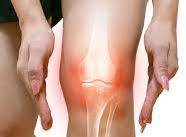 Osteoarthritis: Many individuals with Down syndrome have hyper flexible joints. Over time these can lead to increased wear and tear on the large joints (hips, knees etc.) causing osteoarthritis. Those who are or have been overweight are at a greater risk. Arthritis is painful and it can lead to:
Treatment: Pain levels are often under reported so needs to be discussed with a GP or specialist if suspected. Suitable pain relief is essential. Osteoporosis: A thinning of bone mass leading to the risk of fracture. Adults with Down syndrome are at a higher risk for disease especially if there is:
Diagnosis: A bone density scan and can be treated with medication, exercise and diet. Atlantoaxial or Cervical spine (neck) instability: Instability between the first and second spinal bones directly below the base of the head, If instability is present and arthritis changes occur in the spine, there is increasing risk of damage to the spinal cord in that region. The bones of the neck are more vulnerable as adults with Down syndrome grow older. Symptoms include:
Diagnosis: A screening cervical spine x-ray is generally recommended at least once during adulthood. Coeliac disease: Where one’s body cannot digest gluten present in wheat products, causing damage to the lining of the intestine and preventing absorption of certain nutrients causing:
Diagnosis: Screening can be done via a blood test, but formal diagnosis requires a biopsy of the small intestine. Treatment: Dietary modification Alzheimer’s: A type of dementia that gradually destroys brain cells affecting:
Early onset Alzheimer’s disease is more common in adults with Down syndrome as they both share a genetic connection on chromosome 21. The risk of developing Alzheimer’s disease increases with age, although it is not inevitable that people with Down syndrome will get Alzheimer’s. It is helpful to have a good baseline of basic self-care skills, personal achievements, academic and employment milestones and other skills for comparison as changes are observed. Diagnosis: clinical judgment based on an accurate history. Reference:
National Down Syndrome Society NDSS Aging and Down Syndrome Health and Well-being Guide. About Osteoporosis - Moving Safely Good posture and proper body mechanics are important throughout your life, especially if you have osteoporosis. “Body mechanics” refers to how you move throughout the day. Safe Movement Knowing how to move, sit and stand properly can help you stay active and prevent broken bones and disability. Proper posture can also help to limit the amount of kyphosis, or forward curve of the upper back, that can result from broken bones in the spine. One of the most important things about body mechanics and posture is alignment. Alignment refers to how the head, shoulders, spine, hips, knees and ankles relate and line up with each other. Proper alignment of the body puts less stress on the spine and helps you have good posture. Unsafe Movement To keep proper alignment, avoid the following positions or movements:
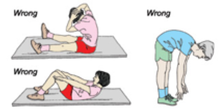 Some exercises can do more harm than good. If you have osteoporosis or have had broken bones in the spine, you should avoid exercises that involve bending over from the waist. Some examples include:
Many exercises and activities such as yoga, Pilates, tennis and golf may need to be avoided or modified because they often involve twisting and bending motions. Bending forward during routine activities also puts stress on the spine and can increase the chance of breaking a bone in the spine. While bending forward puts strain on the spine, it is usually safer if you’re able to keep your back flat.
Many exercises and activities such as yoga, Pilates, tennis and golf may need to be avoided or modified because they often involve twisting and bending motions. Bending forward during routine activities also puts stress on the spine and can increase the chance of breaking a bone in the spine. While bending forward puts strain on the spine, it is usually safer if you’re able to keep your back flat. Sitting
Standing
 Climbing Stairs
 Bending and Turning
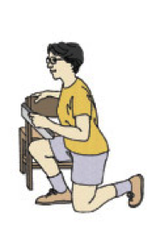 Lifting and Carrying
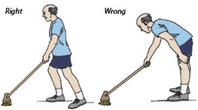 Pushing and Pulling
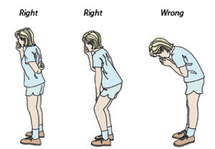 Coughing and Sneezing
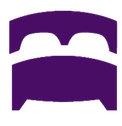 Getting into Bed
Lying Down and Getting Out of Bed
When getting out of bed, reverse the steps you used to get into bed (above):
When on your back, never lift your head and upper back to sit up in bed or get out of bed.
Ref: National Osteoporosis Foundation USA About your abdominal muscles Our abdominal (stomach) muscles are critical in supporting our backs. It is very important to keep them strong. We have four layers of abdominal (stomach) muscles, the rectus abdominis, external oblIques, internal obliques and transversus abdominis. The first three of these muscles are vital for support of your lower back. They act as an inbuilt corset and are the majority of muscles that make up your core muscles. To protect your back from injury keeping your core muscles strong is very important along with ensuring when you’re handling loads you lift without twisting and losing the curve of your spine. If you want to protect your back from injury here is a simple way to strengthen your abdominal muscles. 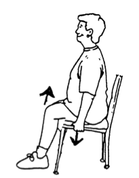 Here is an exercise you can try to improve your abdominal strength. Sitting on a dining chair try lifting both feet just off the floor while your hands push down on the chair seat just beside your legs. (See diagram). Hold for a few seconds and increase the time, as your muscles get stronger. Practice four times before each meal perhaps! NB Remember to breathe normally – do not hold your breath 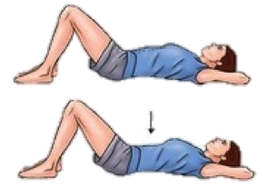 Notice how your stomach (abdominal) muscles feel while doing this exercise so you will know when trying the following. Now you can practice bracing your abdominal muscles in any position – sitting, lying, standing, or walking. Try doing it while doing everyday activities like vacuuming, standing doing the dishes, sitting watching the TV, lifting anything and while you do exercises and stretches. It’s particularly useful to brace these muscles while lifting, or carrying anything with a little weight especially children. Strong abdominals help your back and as well as your figure! If you are having trouble doing this exercise or have back pain, you don’t have to struggle alone. Our friendly physiotherapists can help. Just contact us Ph: 03 377 5280 Email: [email protected] Website: www.therapyprofessionals.co.nz Compiled for you by Therapy Professionals Physiotherapists
Communicating with Technology Sometimes people with disabilities have problems communicating even their basic needs and wants. This is frustrating for them and those around them. Communicating is a complex task, which, at its most basic level, is about understanding and being understood. There are many components to the process of communication, like understanding and using:
- words and sentences (Ianguage)
If someone has a problem with any of these areas then it can make communication difficult. A speech Language therapist is skilled in identifying where the break down in communication occurs and finding solutions to these problems. The use of technology can help some people struggling to communicate however not everyone. Others may benefit more from low-tech solutions. Independence can be enhanced with the use of technology too. For those who technology would help Speech Language Therapists can help with:

Therapy Professionals Speech Language Therapists are experienced working with people of all ages and many kinds of disabilities. Whether you are older having had a stroke or you’re a child with an intellectual and physical disability we can help. If you need help with a communication problem our friendly Speech Language Therapists
can help, just contact us. Phone 3775280 Email [email protected] |
AuthorShonagh O'Hagan Archives
July 2024
|
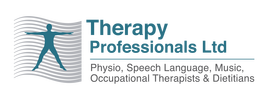
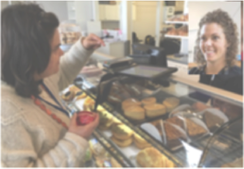
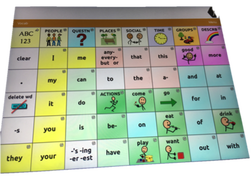
 RSS Feed
RSS Feed